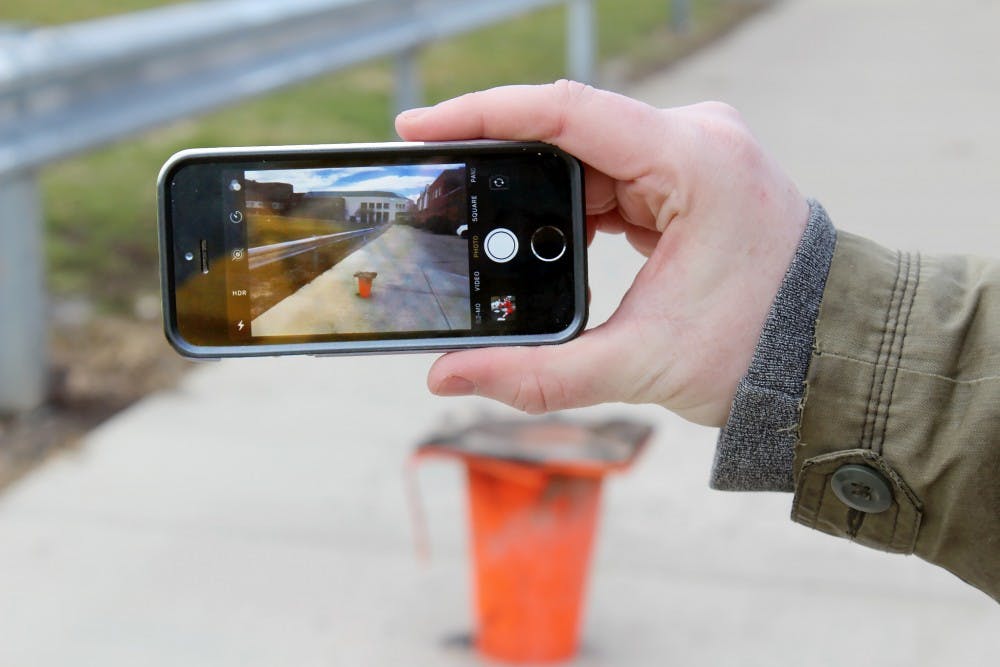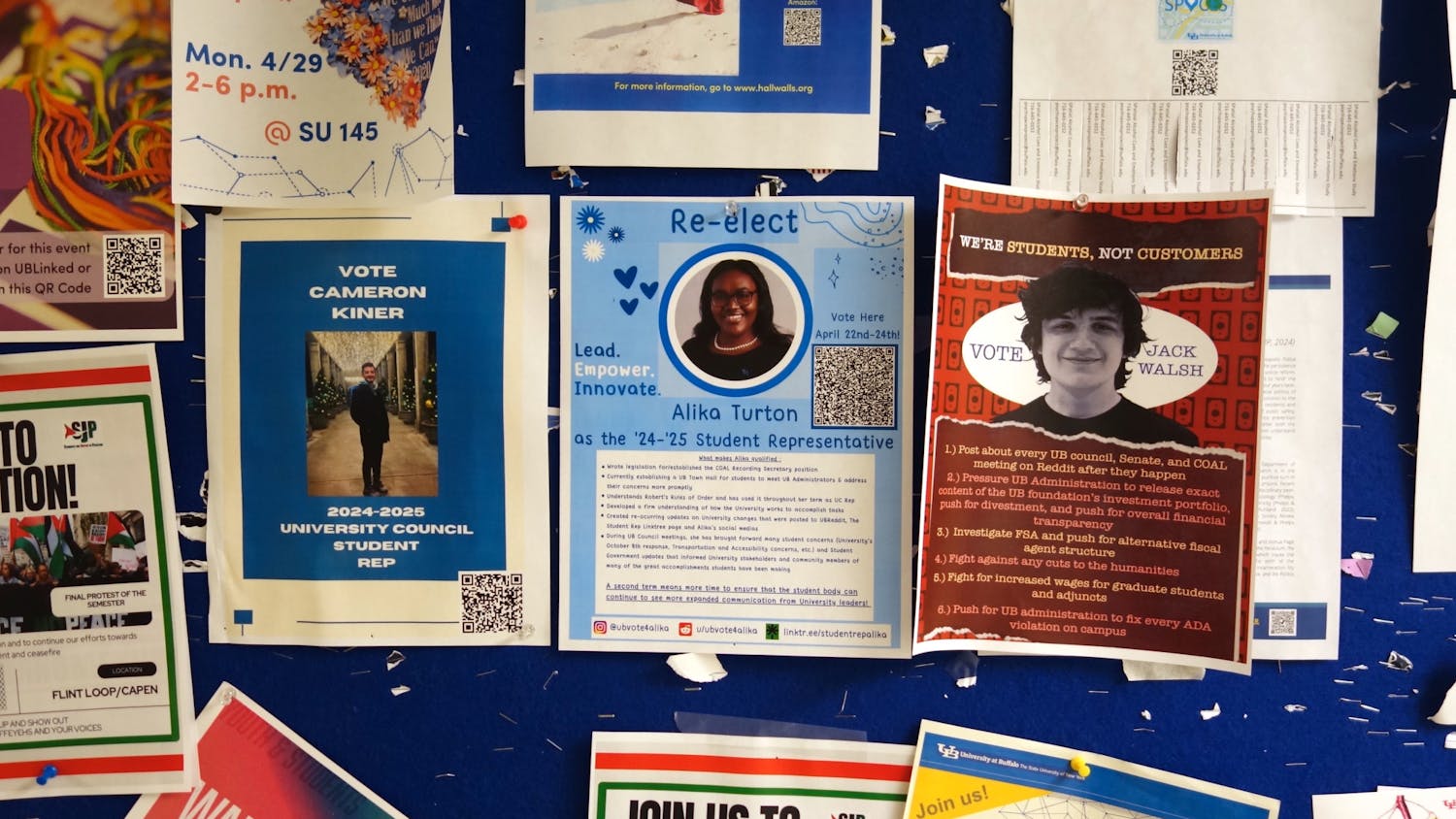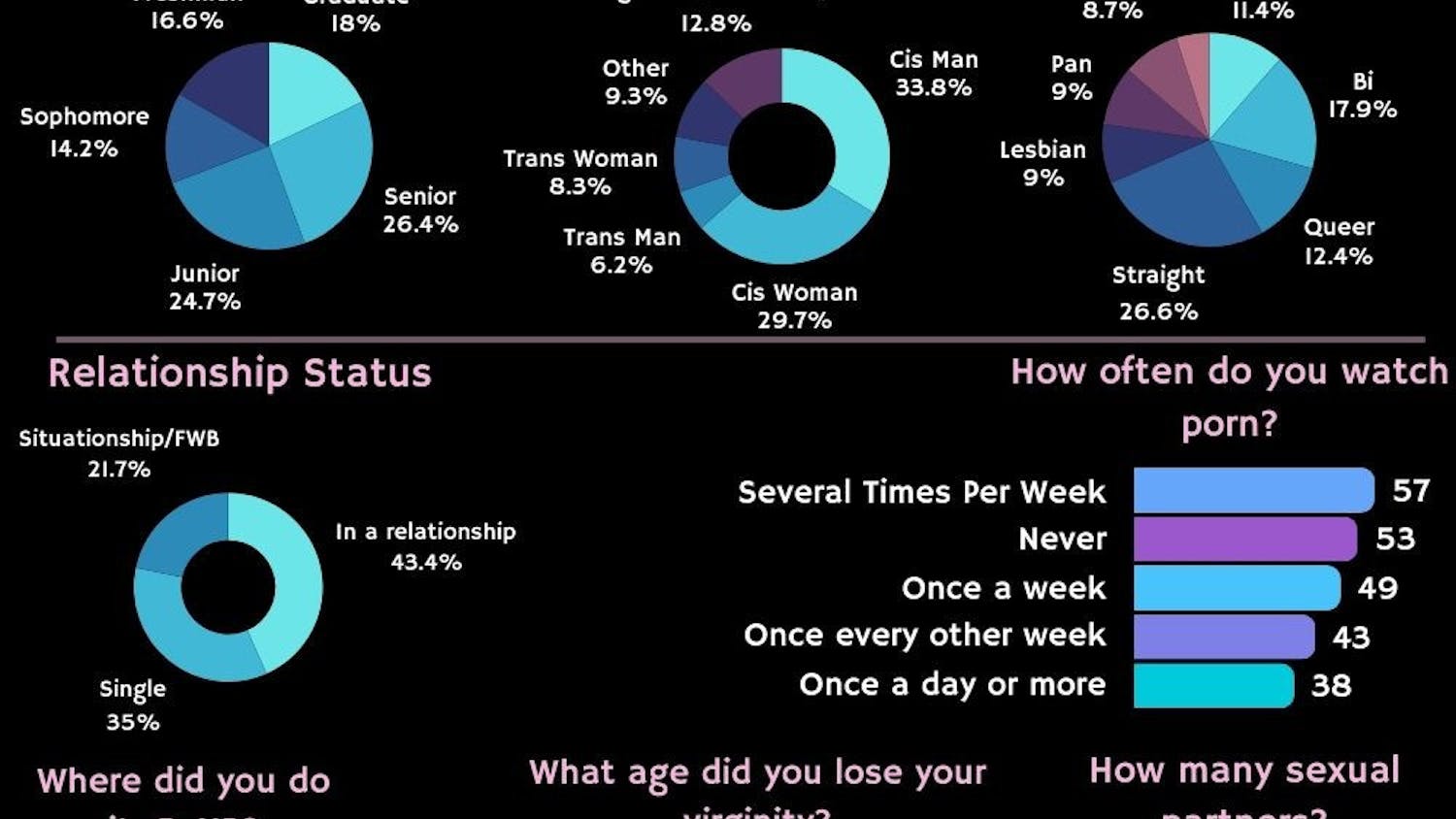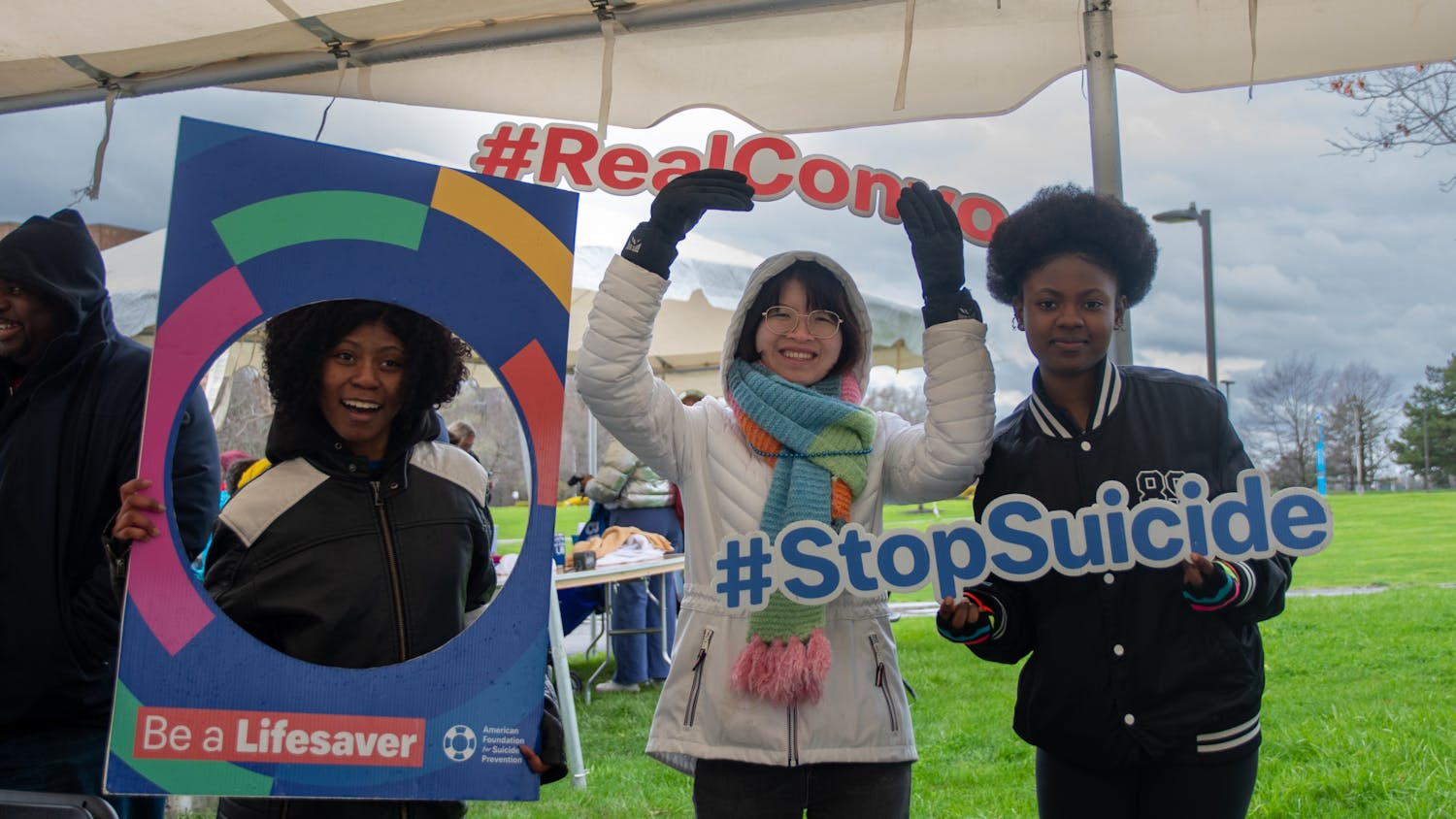For some, the upside-down cone filling in a pothole near the UB Commons is simply that: an upside-down cone. For online lover of cones Kalil Hendel, it’s “a sharp, absurdist commentary on the complex relationship between issues of public safety and the establishment response.”
Welcome to Cone Spotting.
Cone Spotting is guided by the credo posted in its description: “spot those cones. pics from phones. never b [sic] alone.” The one-and-a-half-year-old group has over 1,000 members across the world –– 1,261 at time of publication –– and over 750 of those are considered “active members,” posting, commenting or liking pictures of cones at least once in the last week, according to Hendel, an admin and one of the early members of Cone Spotting.
Hendel, a sophomore mechanical engineering major, said the “infamous upside-down cone” at UB has popped up on his feed a couple of times in the past week or so. He “loves” it every time.
“A standardly oriented cone does not necessitate a pothole, and so appears innocent, but the cleverly inverted cone is indebted to the hole,” Hendel said. “In fact, it would have no footing without it. This is the relationship between all cones and the hazards they represent.”
Hendel said the pictures of cones popping up on his timeline are the best part of his daily social media experience. Most online content and real-world events are stressful, but Hendel said it’s always great to see “cone bois.”
Cone Spotting is part of a rise in niche Facebook groups that are often light-hearted, like Dogspotting, a group for posting pictures of dogs, and New Urbanist Memes for Transit-Oriented Teens, a group for discussions on urban planning, transit and general city life, often through memes. Cone Spotting serves as an intentionally odd, self-referential online community, taking the humor of these groups to absurd new levels.
Sociology professor Kevin Smiley said Dogspotting, in this case, acts as a frame for Cone Spotting, just as social justice movements act as a frame for climate and environmental justice movements. 
“Niche groups like this never arise out of a vacuum but often out of related phenomenon,” Smiley said in an email.
One of the most well-known figures in urban studies, Jane Jacobs, wrote about being aware of the “sidewalk ballet,” the things that happen on neighborhood streets that make the city what it is. Smiley said he thinks the members of Cone Spotting are attuned with the streets they walk down, specifically enjoying the “mundane elements like random cones.”
Tim McMahon, a freshman legal studies major, is particularly aware of the ballet.
Over winter break, McMahon’s friend, who attends SUNY Plattsburgh, mentioned Cone Spotting to him, saying he would probably be good at it.
“Incidentally, I was,” McMahon said.
He was one of the first to spot the upside-down cone sticking out of the ground. He took a picture and posted it in the group. A few days later, he saw someone else in the group had posted the same upside-down cone, much to his chagrin. Even so, McMahon said he enjoys walking around campus, always on the lookout for an orange piece of conical rubber.
“Before I was in Cone Spotting, I used to see a cone and I’d be like, ‘Whatever, it’s just a cone,’” McMahon said. “Now whenever I see a cone, I’m like, ‘Oh, there’s a cone right there!’”
On Tuesday, a cone spot reached one hundred reactions in the group for the first time, a milestone for Cone Spotting. The picture, taken in London by UB student Hugo Fernandez, a senior business and psychology major, shows two spiral cones that Fernandez referred to as “rare swirly boiz.” 
“It’s a good laugh,” Fernandez said. “Quality cones make quality ‘cone-tent.’ A variation on something we all see in urban environments is something people get excited about.”
Puns play a big role in Cone Spotting. Hendel said the group has always encouraged creative captions for the “cone-tent” people post. One member posted a small pile of cones with the caption, “My favorite prequel is Star Wars: a Stack of the Cones.” Others use words like “cone-grats” and “cone-struction.” Hendel himself has a pet cone named “Conerad.”
But the group is not without some “cone-troversy.”
Kai Haskins, a senior business major at Babson College in Massachusetts, founded Cone Spotting in November 2016 after taking a few pictures of some aesthetically pleasing cones. Little did they know a cone-spotting group already existed: Cone Spotting (Official).
“I didn’t bother to check,” Haskins said. “It was such a ridiculous premise that it didn’t even cross my mind that a group could exist already.”
On Boxing Day 2016, Haskins received a message from someone telling them to shut down their cone-based group, claiming it was a copy of Cone Spotting (Official). Haskins said no, and the other group retaliated.
Several members from Cone Spotting (Official) joined Haskin’s group and began posting non-cone photos, according to Haskins and Hendel. It was the first and only time the admin team of Cone Spotting had to take serious action, banning the “cone trolls.”
Members of Cone Spotting (Official) could not be reached for comment.
Now, with over 300 more members in Cone Spotting than in Cone Spotting (Official), Hendel and Haskins said they feel as though they’ve won the rivalry. Simply passing the 1,000-member milestone was a big deal for the group. Hendel figured out who the 1,000th member was and sent them a cone in the mail.
endel said he loves the community, especially the interconnectedness of the small, close-knit group.
“It’s a weird, weird feeling,” Hendel said. “I know at some point in my life, somebody’s going to recognize me and be like, ‘Hey, aren’t you from Cone Spotting?’ And to be honest, I can’t wait.”
Dan McKeon is copy chief and can be reached at dan.mckeon@ubspectrum.com and @dan_mckeon.






